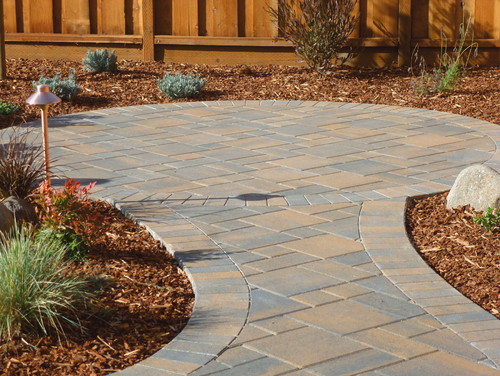A clean patio can completely transform the look and feel of your backyard. Over time, patio pavers can accumulate dirt, moss, stains, and weeds—making even the most beautiful design look tired and unkempt. Whether you’re preparing for an outdoor gathering or simply want to restore some peace and polish to your space, learning how to clean patio pavers properly can make all the difference.
In this step-by-step guide, we’ll walk you through effective, budget-friendly ways to clean patio pavers and bring your outdoor space back to life.
Tools and Materials You’ll Need
Before getting started, gather the following tools and supplies:
- Stiff-bristled broom or brush – For sweeping and scrubbing.
- Garden hose or pressure washer – To rinse and deep-clean.
- Bucket and mild detergent – A gentle solution for basic grime.
- White vinegar or baking soda – Natural options for tackling tough stains.
- Weed removal tool or vinegar spray – To eliminate unwanted greenery.
- Polymeric or regular sand – For re-sanding paver joints if needed.
These basic materials are affordable, easy to find, and safe for most outdoor surfaces.
Step-by-Step Guide on How to Clean Patio Pavers
Step 1: Clear the Area
Start by removing any furniture, planters, or decorative elements from your patio. Give the entire area a good sweep using a stiff broom to get rid of loose leaves, dirt, and dust. This step ensures you’re not scrubbing over debris, which can scratch the paver surface or interfere with cleaning solutions.
Step 2: Remove Weeds and Moss
Weeds growing between paver joints can make your patio look neglected and may even shift the stones over time. Use a weeding tool or a flathead screwdriver to dig out deep-rooted weeds. For moss and smaller growth, a white vinegar solution (equal parts vinegar and water) works well. Spray the solution directly on affected areas and let it sit for 30 minutes before rinsing.
Tip: Avoid harsh chemical weed killers if you have pets or children who play outdoors.
Step 3: Wash the Surface
For general cleaning, a garden hose with a spray nozzle is usually sufficient. If your patio is heavily soiled, consider using a pressure washer—but be cautious. High pressure can dislodge the sand between pavers or even crack the stones. Always use the lowest effective setting and keep the nozzle at least 12 inches from the surface.
If you want to avoid disturbing the sand while pressure washing, check out this helpful guide: How to Clean Patio Pavers Without Removing Sand
Step 4: Spot Clean Stains
Different stains call for different solutions:
- Grease or food stains: Mix warm water with a few drops of mild dish soap. Use a brush to gently scrub the area and rinse with clean water.
- Mold or mildew: Apply a solution of white vinegar and water or a baking soda paste. Let it sit for 15–20 minutes, scrub with a stiff brush, and rinse thoroughly.
- Rust or oil stains: These may require a commercial paver cleaner, but always spot test first.
Avoid using bleach or other harsh chemicals, especially on colored or sealed pavers.
Step 5: Re-Sand the Joints (Optional but Recommended)
If your cleaning process has dislodged sand from between the pavers, it’s a good idea to re-sand the joints. Choose polymeric sand for better resistance to weeds and erosion.
To re-sand:
- Make sure the patio is completely dry.
- Pour sand over the surface and sweep it into the joints.
- Use a plate compactor or tap lightly with a rubber mallet to settle the sand.
- Lightly mist with water to set the polymeric sand (if used).
- Re-sanding not only boosts structural stability but also helps keep weeds and ants at bay.
Tips for Preventing Future Build-Up
Routine maintenance will keep your patio looking its best:
- Sweep regularly to prevent debris build-up.
- Hose down the surface every few weeks during pollen or dry seasons.
- Address spills immediately to prevent permanent staining.
Consider applying a paver sealer once a year to protect against moisture, UV rays, and staining.
Common Mistakes to Avoid
Cleaning patio pavers is simple, but a few missteps can do more harm than good:
- Using too much pressure: Overuse of pressure washers can erode paver surfaces and remove joint sand.
- Neglecting the joints: Ignoring gaps between pavers can lead to weed growth and shifting.
- Choosing the wrong cleaner: Harsh chemicals can discolor or damage pavers, especially natural stone types.
- Skipping regular maintenance: A once-a-year deep clean is helpful, but regular upkeep is key to long-term results.
Final Thoughts
Keeping your patio pavers clean doesn’t have to be a hassle or cost a fortune. With a few simple tools and the right techniques, you can refresh your outdoor space and extend the life of your patio. Whether you’re preparing for entertaining or simply enjoying some quiet time outdoors, a clean patio makes a world of difference.



